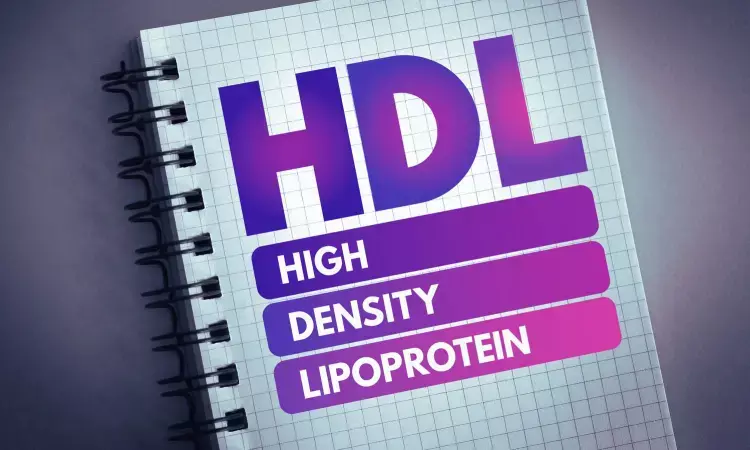- Home
- Medical news & Guidelines
- Anesthesiology
- Cardiology and CTVS
- Critical Care
- Dentistry
- Dermatology
- Diabetes and Endocrinology
- ENT
- Gastroenterology
- Medicine
- Nephrology
- Neurology
- Obstretics-Gynaecology
- Oncology
- Ophthalmology
- Orthopaedics
- Pediatrics-Neonatology
- Psychiatry
- Pulmonology
- Radiology
- Surgery
- Urology
- Laboratory Medicine
- Diet
- Nursing
- Paramedical
- Physiotherapy
- Health news
- Fact Check
- Bone Health Fact Check
- Brain Health Fact Check
- Cancer Related Fact Check
- Child Care Fact Check
- Dental and oral health fact check
- Diabetes and metabolic health fact check
- Diet and Nutrition Fact Check
- Eye and ENT Care Fact Check
- Fitness fact check
- Gut health fact check
- Heart health fact check
- Kidney health fact check
- Medical education fact check
- Men's health fact check
- Respiratory fact check
- Skin and hair care fact check
- Vaccine and Immunization fact check
- Women's health fact check
- AYUSH
- State News
- Andaman and Nicobar Islands
- Andhra Pradesh
- Arunachal Pradesh
- Assam
- Bihar
- Chandigarh
- Chattisgarh
- Dadra and Nagar Haveli
- Daman and Diu
- Delhi
- Goa
- Gujarat
- Haryana
- Himachal Pradesh
- Jammu & Kashmir
- Jharkhand
- Karnataka
- Kerala
- Ladakh
- Lakshadweep
- Madhya Pradesh
- Maharashtra
- Manipur
- Meghalaya
- Mizoram
- Nagaland
- Odisha
- Puducherry
- Punjab
- Rajasthan
- Sikkim
- Tamil Nadu
- Telangana
- Tripura
- Uttar Pradesh
- Uttrakhand
- West Bengal
- Medical Education
- Industry
HDL Parameters linked to Heart Failure Risk: Insights from Multicohort Analysis

USA: Recent findings from a multicohort analysis have shed new light on the relationship between high-density lipoprotein (HDL) parameters and the risk of heart failure. The study, published in JACC: Heart Failure, conducted across multiple cohorts, offers valuable insights into the role of HDL cholesterol in cardiovascular health.
The researchers found that HDL particle concentration (HDL-P) is associated with a lower risk of heart failure (HF). In contrast, larger HDL size was tied to a higher HF risk, and they observed no significant association between HDL-C and HF risk after accounting for cardiovascular (CV) risk factors.
High-density lipoprotein (HDL) is commonly characterized by its cholesterol concentration (HDL-C) and an inverse association with atherosclerotic cardiovascular disease (ASCVD). Ambarish Pandey, the University of Texas Southwestern Medical Center, Dallas, Texas, USA, and colleagues sought to evaluate the association of HDL particle concentration (HDL-P), HDL-C, HDL particle size (HDL-size), and cholesterol content per particle (HDL-C/HDL-P) with risk of overall heart failure and subtypes.
The study led to the following findings:
- Among 16,925 participants (53.5% women; 21.8% Black), there were 612 incident HF events (HF with reduced ejection fraction, 50.5%; HF preserved ejection fraction, 49.5%) over a median follow-up of 11.4 years.
- In adjusted models, higher HDL-P was significantly associated with lower HF risk (HR of highest vs lowest tertile of HDL-P: 0.76).
- Larger HDL size was significantly associated with higher overall HF risk (HR of largest vs smallest tertile of HDL-size: 1.27).
- HF risk associated with HDL-P and HDL size was similar for HF subtypes. In adjusted analyses, there was no significant association between HDL-C and HF risk.
- Higher HDL-C/HDL-P was significantly associated with higher overall HF risk (HR of highest vs lowest tertile of HDL-C/HDL-P: 1.29).
Higher HDL-P and smaller HDL-size were each associated with a lower risk of overall HF, and these associations do not seem to be driven by ASCVD events in a diverse cohort of community-dwelling adults.
"There is a need for additional studies to evaluate further the implications of modulating HDL-size and HDL-P and the potential utility for HF prevention," the researchers wrote.
In conclusion, the multicohort analysis provides compelling evidence of the inverse association between HDL parameters and the risk of heart failure. Higher levels of HDL cholesterol and increased HDL particle concentration appear to confer protection against heart failure incidence. These findings underscore the importance of promoting cardiovascular health through strategies that enhance HDL levels, potentially offering avenues for reducing the incidence of heart failure and improving overall cardiovascular outcomes.
Reference:
Pandey, A., Patel, K. V., Segar, M. W., Shapiro, M. D., Ballantyne, C. M., Virani, S. S., Nambi, V., Michos, E. D., Blaha, M. J., Nasir, K., Cainzos-Achirica, M., Ayers, C. R., Westenbrink, B. D., Flores-Guerrero, J. L., Bakker, S. J., Connelly, M. A., Dullaart, R. P., & Rohatgi, A. (2024). Association of High-Density Lipoprotein Parameters and Risk of Heart Failure: A Multicohort Analysis. JACC: Heart Failure. https://doi.org/10.1016/j.jchf.2024.03.007
Dr Kamal Kant Kohli-MBBS, DTCD- a chest specialist with more than 30 years of practice and a flair for writing clinical articles, Dr Kamal Kant Kohli joined Medical Dialogues as a Chief Editor of Medical News. Besides writing articles, as an editor, he proofreads and verifies all the medical content published on Medical Dialogues including those coming from journals, studies,medical conferences,guidelines etc. Email: drkohli@medicaldialogues.in. Contact no. 011-43720751


